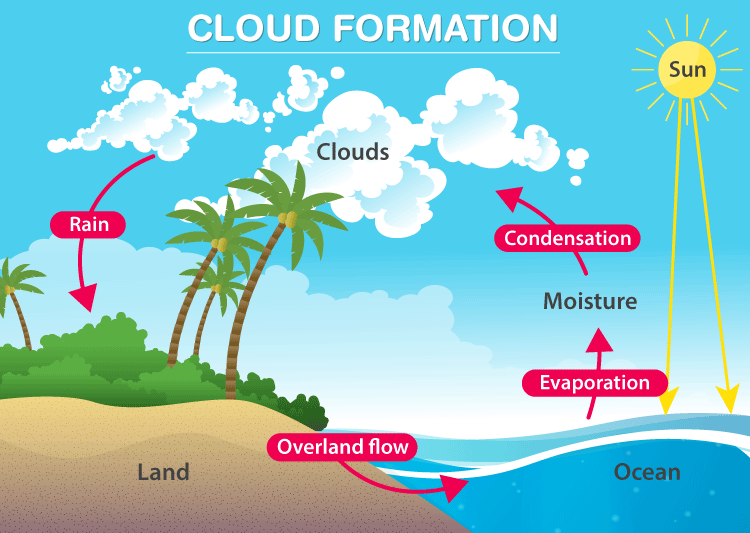Table of Contents
Introduction
Rain is droplets of water that are condensed as a result of evaporation. During the water cycle formation of clouds takes place. Rain is also called precipitation.
Water is absorbed from different water bodies, a large amount of which vaporizes and enters the atmospheric air. Water gets evaporated because of various other biological processes as well. This hot air containing water molecules thus rises above the ground level, expands and cools after reaching a suitable height. On cooling, water vapour turns into droplets of water, and this process is called condensation. It is facilitated by substances such as dust and other particles suspended in the air, which accelerates the process and forms the nucleus for these droplets. The cluster of such droplets clamps together to form huge water masses, appearing to us as clouds. Once they grow big and heavy, they fall down to the ground as rain. Hence, they are precipitations. These precipitations are sometimes in the form of snow, hail or sleet if the temperature is low.
How Are Clouds Formed?
When water molecules from the earth’s surface are evaporated by the sun because they are lighter than air, clouds are created. As they ascend, these water vapours cool down and eventually stop rising when they hit the frost point or saturation. Droplets are now free to float in the air and group together, eventually joining to form enormous water masses that take on the appearance of clouds to us.

The Water Cycle
It is a hydrological cycle in which water in various states of matter circulates on a regular basis. It occurs in the following phases:
- Water evaporates or transforms from a liquid to a gas.
- Plants and trees release water into the atmosphere of the earth.
- As water is transformed back into a liquid state, clouds are formed.
- The movement of dust and other atmospheric particles aids in cloud formation.
- The precipitation cycle, which includes rain, snow, drizzle, and more, continues.
To get more information on the formation of clouds and the water cycle, don’t forget to register at BYJU’S.
Further reading:
| Biogeochemical Cycle |
| Movement Of Air |

Comments